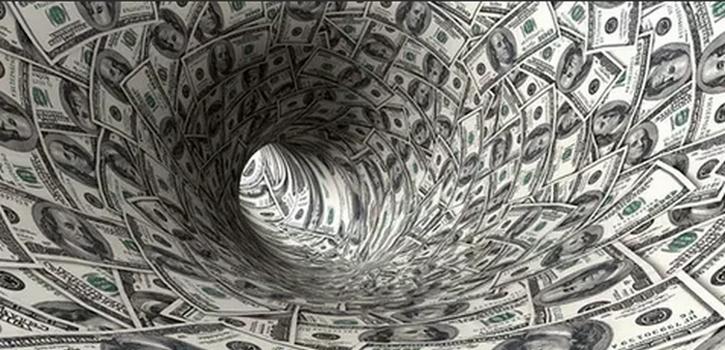If you happen to wallow in debt, it is worth remembering that no one is safe from this. A recent GO Banking Rates study showed that an average American has $ 63,000 of debt on average. A similar picture is observed now in Ukraine and the Russian Federation, only the amounts owed are less and are expressed in a different currency.
Preparatory stage
Before you begin to take the first steps to get rid of current debts, it is important to understand what you have to deal with. It is recommended to collect and systematize all available information about existing debts and loans, namely:
- the latest statements of any outstanding loans and debts, including student loans, medical bills, and so on;
- credit card account statements;
- a credit report, which can be obtained free of charge every year through the website of CreditReport.com;
- credit rating, which allows to find out whether the right to consolidate (consolidate) the debt or receive lower interest rates is deserved.
After receiving all the required information, you can proceed to the first step from the manual on debt repayment.
1. Find out exactly how much debt is on the current day

Having a clear idea of the amount of existing debt and persons or creditor organizations allows you to cope with the debt and / or make it more manageable.
A list of all existing debts is recommended, with the following information:
- name of each creditor;
- amount of debt;
- loan interest rate;
- minimum monthly payment.
Credit card statements to determine how much should be paid each month in excess of the required minimum payment to pay off all debt. This data should also be included in this list.
2. If possible, try to reduce interest rates on loans

With high interest rates, debt will grow faster, making it even more difficult to repay. One way to reduce the interest rate is to transfer the balance to a credit card at another bank. Some credit cards have an annual interest rate of 0% for 18 months. So it will be possible to use this time to deal with debts without increasing them monthly. However, it should be noted that sometimes a commission of 3 to 5% may be charged for a balance transfer.
Another way to reduce the interest rate is a direct call to the lender or banking organization with a request to reduce the interest rate on the loan. In the case of a long interaction with this credit organization, as a reward for loyalty to the bank, this request can be granted.
Finally, you can use credit debt consolidation to combine all monthly payments on loans and credit cards into one payment with a lower interest rate. However, it should be borne in mind that an increase in the duration of a loan can entail a significant increase in "overpayment." Therefore, before performing a restructuring of credit debt, it is recommended that preliminary calculations be made.
3. Calculate all monthly payments

You need to go back to the record sheet and add up the sum of the three-year payments for all credit cards, as well as the mandatory monthly payments for all other debts. The result will be the amount of the monthly payment, which will need to be regularly transferred to pay debts.
4. Think over an action plan.
After the amount for monthly payments is calculated, it will be possible to determine whether there are enough monthly incomes for their implementation. In case of a shortage of funds, experts recommend contacting a credit agency consultants or meeting with a bankruptcy lawyer.
You can also search for reserves of missing funds in existing sources of income. To do this, you will need to reduce optional costs and perform the following steps:
- Choose which debt to pay off first. In most cases, debtors focus on paying off credit card debt, since interest rates on them are much higher than on mortgage, auto, student, or consumer loans.
- Make the largest debt or loan with the highest interest rates the priority payout.
- Consider establishing the automatic repayment of mandatory monthly minimum payments on remaining debts.
- Try to repay monthly as many priority debts as possible.
- After paying off the primary debt, choose the next and focus on paying it. And so on until all loans and credits are fully repaid.
5. Track results

Having a number of current debts, you should regularly monitor progress on their repayment, so that after repayment of one primary debt immediately switch to another. It is recommended to control the repayment process until all debts are fully repaid.
As you go through the repayment process, you need to:
- Monitor your credit rating to see how it is improving. It is a good indicator of the financial ability of the borrower.
- Consider consolidating a loan or transferring a balance to a credit institution with more favorable terms of cooperation (if this has not been done before).
Following this action plan, you can gradually get out of the debt hole and begin to move through the stages of personal welfare from an unstable financial condition, to stable, and then to financial freedom. If at the same time there is a need for additional income, it is recommended that you think about working harder, asking for higher wages, getting additional work or getting a third-party order - all in order to earn extra money that will go towards paying off existing obligations.
